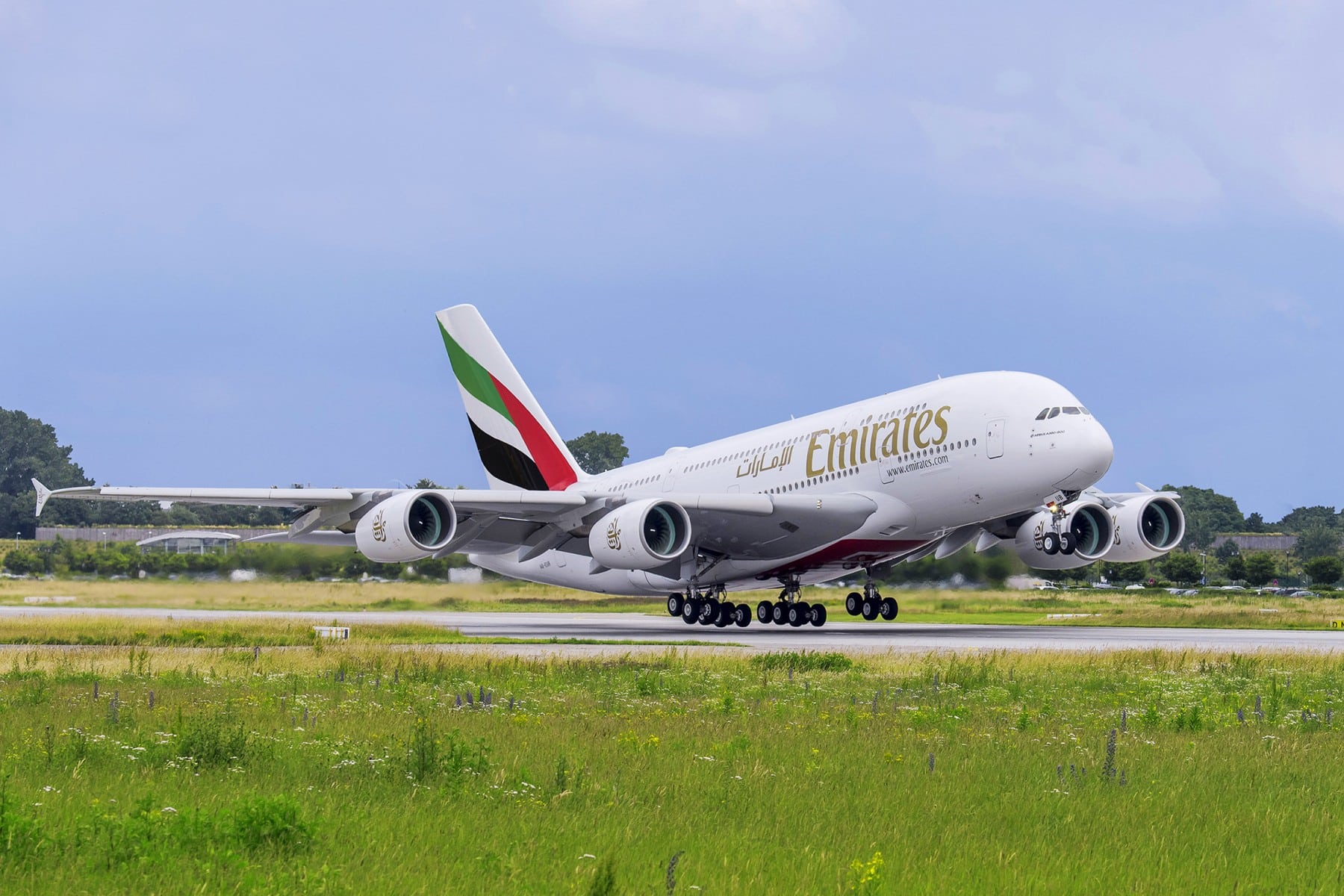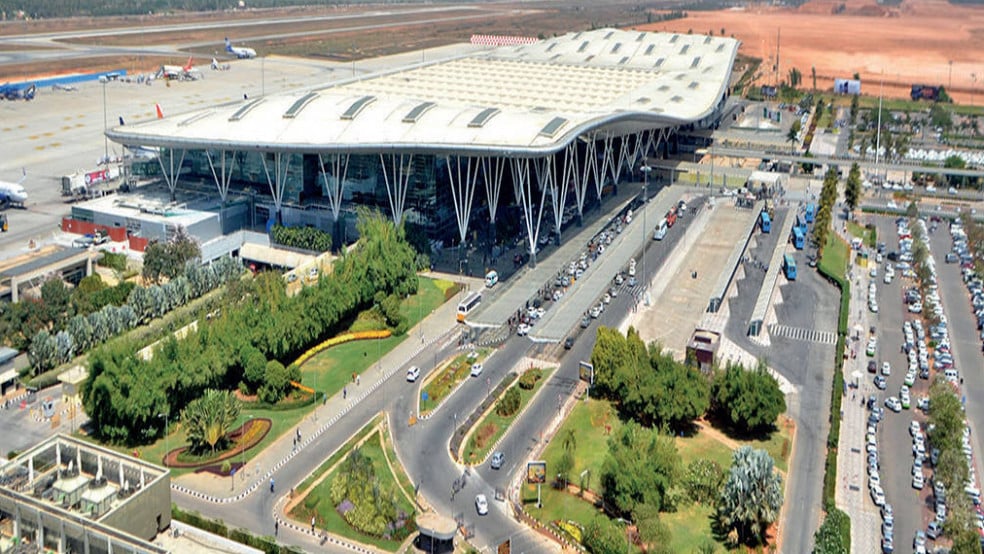Aerospace
The Emirates A380 touched down in Bangalore today to begin its first regularly scheduled flight
The Emirates A380 touched down in Bangalore today to begin its first regularly scheduled flight out of Bangalore’s KIAL airport. #bangalore airport, #India , #Emirates , #A380,

The Emirates A380 touched down in Bangalore today to begin its first regularly scheduled flight out of Bangalore’s KIAL airport. In order to better serve its passengers on the popular route, Emirates announces that its flagship A380 service will begin flying to Bengaluru for the first time on October 30. At Bengaluru’s Kempegowda International Airport, Emirates also becomes the first airline to run regularly scheduled passenger services using the A380, the largest commercial aircraft in operation.
The world’s largest plane, A380 will land in Bengaluru’s Kempegowda International Airport (KIA) for the very first time today i.e. on 14 October. Emirates Airlines flight EK562 will land its signature double-decker aircraft at the capital city of Karnataka from Dubai.
The flight will also do a return journey today itself, the passengers aboard flight number EK563 will travel in an A380 which will depart KIA at 6.40 pm local time and reach Dubai at 9 pm local time.
The A380 was earlier set to touch down in Bengaluru on 30 October. The flight was to depart from Dubai at 9.25 pm local time on 30 October and land at KIA at 2.30 am on 31 October.
Up till now, Emirates Airlines has used a Boeing 777 to fly passengers between Dubai and Bengaluru. So let’s speak about the qualities that make the A380 the largest passenger aeroplane in the world before it touches down in Bengaluru.
About KIAL
The 4,000-acre Kempegowda International Airport is owned and run by Bengaluru International Airport Limited (BIAL), a public-private partnership. It is the third busiest airport in India in terms of passengers and cargo handling, and it is the 29th busiest airport in all of Asia. It links 23 different foreign locations all over the world.
How many runways does Bangalore airport have?
It has two parallel runways that are 4,000 metres long, 45 and 60 metres broad, one has CAT I ILS landing capability and the other is newly constructed with CAT III ILS landing capability.
The runway will have CAT IIIB ILS and be able to accommodate all sorts of aircraft, including Code-F aircraft such as the Airbus A380 and Boeing 747-8. The new runway will be connected to the current north runway, the aprons at Terminal 1 and the planned Terminal 2 by two cross-field taxiways on the east of the runway as well as by an associated parallel taxiway. The hotels nearby are also connected to the nearby train station, which is close to Kempegowda International Airport by bus service.
On which routes does Emirates fly the A380?
According to the schedule, the daily A380 flights will run as EK568/569 and feature three classes: economy class seats, business class seats, and first-class seats. Emirates will provide 777 flight alternatives as well.
Top 6 Largest Passenger Aircraft in the World.(Opens in a new browser tab)
In order to accommodate strong consumer demand on routes that are well-travelled by passengers from across the world, Emirates has begun deploying its flagship A380 aircraft to an expanded list of destinations.
The A380 aircraft has up to a 45 per cent higher capacity per trip than the Boeing 777 aircraft. In August, the Emirates A380 will fly to more than 30 airports on six continents, covering a total of over 130 destinations in the airline’s global network.
Is A380 bigger than 777?

Aerospace
Boeing Transfers Rocket Stage to NASA, Paving Way for Human Moon Mission

Boeing has achieved a significant milestone by providing NASA with the second core stage of the Space Launch System (SLS) rocket.
This crucial component, crafted at NASA’s Michoud Assembly Facility (MAF), is set to propel the Artemis II crew into lunar orbit, marking humanity’s return to deep space after a 50-year hiatus.
The monumental Boeing-built rocket stage, the largest element of the Artemis II mission, will embark on a journey aboard the Pegasus barge, traveling 900 miles to NASA’s Kennedy Space Center.
Comparison of two legendary aircraft B777x vs B747 aircraft:Click here
Upon arrival, it will be meticulously integrated with other essential Artemis II components, including the upper stage, solid rocket boosters, and NASA’s Orion spacecraft within the iconic Vehicle Assembly Building. This intricate integration process is a vital step toward the eagerly anticipated Artemis II launch, slated for 2025.
“Boeing-built products helped land humankind on the moon in 1969, and we’re proud to continue that legacy through the Artemis generation,” remarked Dave Dutcher, vice president and program manager for Boeing’s SLS program. “Together, with NASA and our industry partners and suppliers, we are building the world’s most capable rocket and paving the way to deep space through America’s rocket factory in New Orleans.”
NASA, Lockheed Martin Reveal X-59 Quiet Supersonic Aircraft:Click here
The delivery of Core Stage 2 marks a significant achievement in the evolution of the SLS rocket. Towering over 200 feet and powered by four RS-25 engines, this core stage, coupled with two solid-fueled booster rockets, will generate a staggering 8.8 million pounds of thrust. This immense power is crucial to launching Artemis II and future missions into the vast expanse of space.
The SLS rocket stands unparalleled in its capability to transport both crew and substantial cargo to the moon and beyond in a single launch. Its extraordinary capacity will facilitate the delivery of human-rated spacecraft, habitats, and scientific missions to destinations including the moon and Mars, ushering in a new era of space exploration.
-

 Travel1 week ago
Travel1 week agoAir India to Expand US Operations with Three New Routes After a Decade
-

 Travel2 weeks ago
Travel2 weeks agoWhy We Should Avoid These Stamps in a Passport
-

 Airlines1 month ago
Airlines1 month agoInvestigations Reveal Fake Chinese Titanium in Boeing and Airbus Jets
-

 Tech4 weeks ago
Tech4 weeks agoChina’s CATL Plans 1,800-Mile Electric Plane Launch by 2027
-

 Airport3 days ago
Airport3 days agoTop 10 Largest Airports in the World by Size
-

 Aerospace4 weeks ago
Aerospace4 weeks agoChina’s Fighter Jets Turn Wings into Autonomous Drones
-

 Airlines4 days ago
Airlines4 days agoAir India Rolls Out A350s for Delhi-New York JFK and Newark Routes
-

 Defence3 weeks ago
Defence3 weeks agoBoeing Enhances Chinook with New Engines and Block II Upgrades at $96 Million









